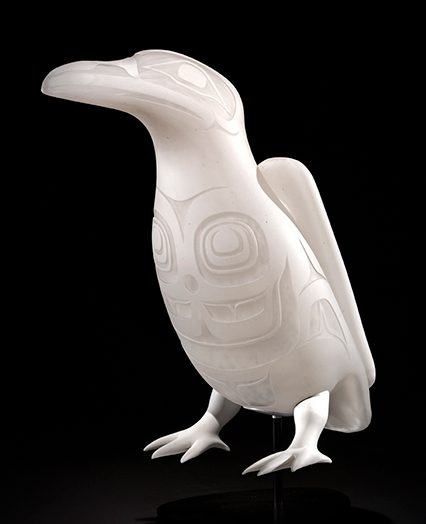Note: All submitted events must be approved before they appear in the calendar.

- This event has passed.
National Museum of the American Indian Presents “Raven and the Evolution of Glass Artist Preston Singletary” May 7 and 8

Visitors can join acclaimed artist Preston Singletary at the Smithsonian’s National Museum of the American Indian May 7 and 8 and hear him discuss his art, his evolution as an artist and the inspiration for the exhibition “Preston Singletary: Raven and the Box of Daylight,” which is on view at the museum in Washington, D.C., through Jan. 29, 2023.
“Raven and the Evolution of Glass Artist Preston Singletary” will feature Singletary discussing the influence of the Tlingit trickster Raven on his glasswork. Gene Tagaban, a Tlingit storyteller, will bring Raven to life through stories, dances and songs. The in-person programs will take place Saturday, May 7, and Sunday, May 8, at 11:30 a.m. and 12:30, 2:30 and 3:30 p.m. in the museum’s Potomac Atrium.
About “Preston Singletary: Raven and the Box of Daylight”
Raven releasing or “stealing” daylight is one of the most well-known stories of the Tlingit. Although many people know the general story of Raven, there are many variations that are unique to specific villages and individual storytellers.
In “Raven and the Box of Daylight,” Raven, the central character, is a trickster who released the stars, moon and sun. Raven leads visitors on a fantastical journey through the transformation of darkness into light. The story unfolds as visitors move through the exhibition’s four environments (along the Nass River, transformation, clan house and world drenched in daylight) while listening to recordings of storytellers paired with layers of original music and coastal Pacific Northwest soundscapes.
Singletary’s art creates a theatrical atmosphere in which his glass pieces enhance the narrative of “Raven and the Box of Daylight.” Backdrops of shadows and projected images complete the exhibition experience.
“Preston Singletary: Raven and the Box of Daylight” has been organized by the artist and Museum of Glass in Tacoma, Washington. It was guest curated by Miranda Belarde-Lewis (Zuni/Tlingit) and the multisensory visitor experience was designed by zoe | juniper. Support for the exhibition at the National Museum of the American Indian provided in part by Quincalee Brown and Dr. James. P. Simsarian, Uschi and William Butler and Mary W. Hopkins.
About the Artist
Singletary (Tlingit American) uses his mastery of European glassblowing to create works of art inspired by Northwest Native imagery. Singletary first learned the art of glass blowing while working with artists in the Northwest. He honed his craft during residencies in Sweden and studied under Italian glass-blowing legends in Venice. He later incorporated his Native heritage to honor the stories shared with him by his great-grandparents. Singletary’s work celebrates his Indigenous culture using Tlingit design principles: creating objects that incorporate elements from the natural world to tell seminal stories and histories of individual families. Singletary adapts new materials into a seamless fusion of modern art, glass and evolving Tlingit tradition. Singletary’s work is featured in the collections of the National Museum of the American Indian; British Museum; Museum of Fine Arts, Boston; Seattle Art Museum; The Corning Museum of Glass, New York; and Heard Museum, Phoenix, among others.
About the National Museum of the American Indian
In partnership with Native peoples and their allies, the National Museum of the American Indian fosters a richer shared human experience through a more informed understanding of Native peoples. The museum in Washington, D.C., is located on the National Mall at Fourth Street and Independence Avenue S.W. Connect with the museum on Facebook, Twitter, Instagram and AmericanIndian.si.edu.
About Museum of Glass
Located in Tacoma, Washington, Museum of Glass is a premier contemporary art museum dedicated to glass and glassmaking in the West Coast’s largest and most active museum glass studio. Opened in 2002, the museum has established a reputation for hosting impactful and engaging artist residencies, organizing nationally traveling exhibitions and creating unique programs for visitors while building a growing permanent collection chronicling the development of modern and contemporary glass. Museum of Glass provides an environment for artists and the public to ignite creativity, fuel discovery and enrich their lives through glass and glassmaking.
